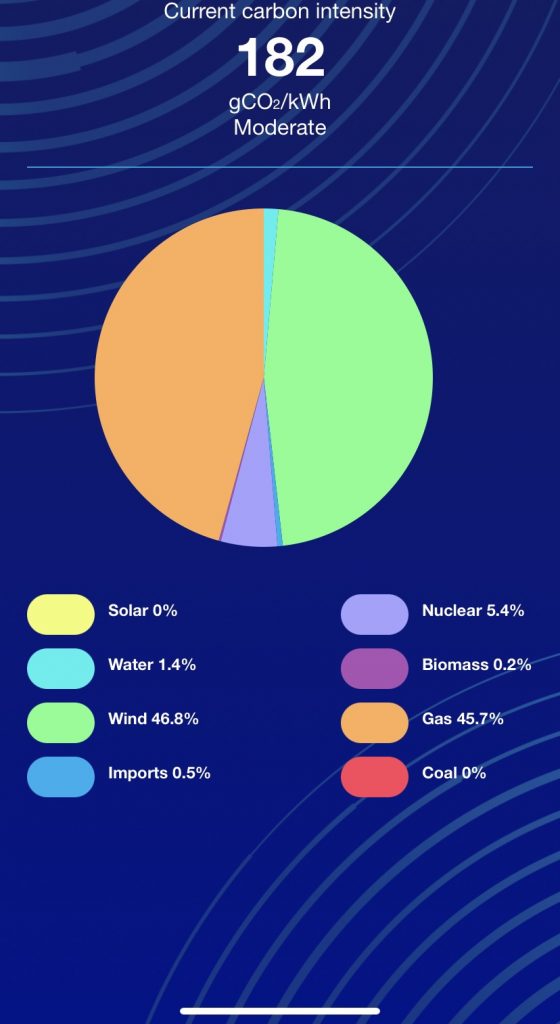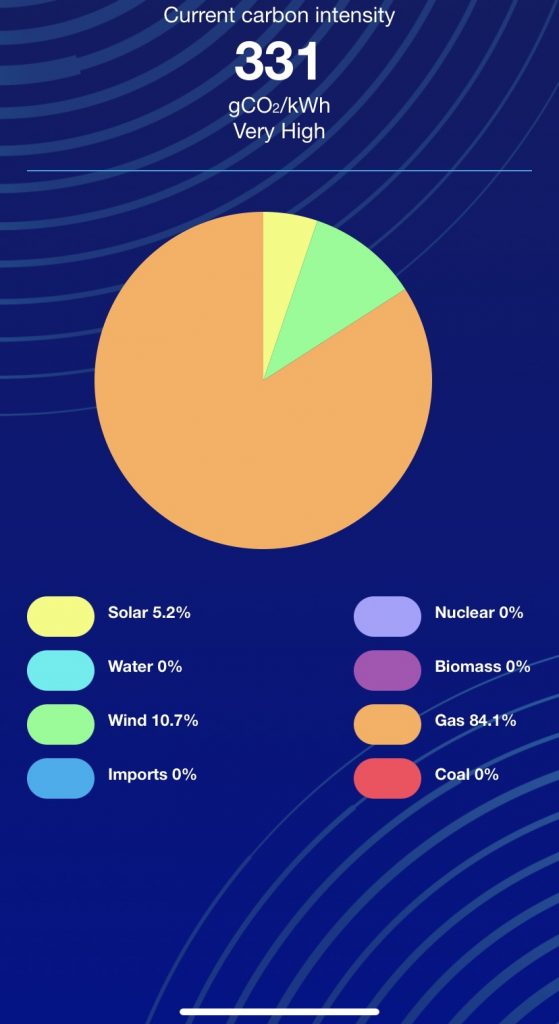How much things have changed in 12 months. In January and February 2021 we were going through a cold winter and our air source heat pump was cost-effectively keeping us warm. Things then started to unravel in the energy world, and over the course of 2021 our electricity tariff has gone up from 11p/kWh to 22p/kWh, and things could get even worse come April when the price cap is revisited. This tariff explosion cannot be overstated because it has taken heat pumps from being cost-effective to being way more expensive to run than oil boilers, raising fresh issues about sustainability.
Let’s get some context before we start. In January 2021, we consumed 2,231 kWh of electricity (just for the air source heat pump) which is a staggering average of 72kWh per day. At 11p/kWh (which is what we were paying at the time) our heating cost us £245 that month. At 22p/kWh we would have paid £490 – for us, this is not financially sustainable so we’ve started looking at alternatives.
Going bivalent: air source heat pump and HVO
Since announcing that we are trialling a biofuel called HVO (hydrotreated vegetable oil) to assist our heat pump this winter we’ve received some interesting comments, emails and messages from people questioning our decision. Apart from the merits of converting waste cooking oil and fats into a heating fuel source that cuts emissions by 88% over kerosene, let’s break things down further.
HVO derived from waste cooking oil and fat has a verified carbon emission factor of 0.036kg/kWh, compared to 0.298kg/kWh for kerosene. This is based on the latest edition of the government’s Standard Assessment Procedure for Energy Rating of Dwellings (SAP 10.2).
So let’s compare heating apples with apples – as I write and construct this post I have no idea what the outcome of this exercise will be.
I started by pulling the CO2 data from the national grid for where we live for January 2 and 4, 2022. Our electricity usage, per kWh, on January 2 was emitting 182g CO2/kWh. The second of January was an extremely windy and blustery day which is reflected in the graphic below (the one on the left).
Looking at the data for January 4 (the image on the right), the carbon intensity was 331g CO2/kWh. This probably had something to do with people going back to work after the festive season break and the fact that there was very little wind contribution with the grid leaning heavily on gas.


So I wanted to see how our bivalent system running the air source heat pump and HVO boiler compared to just running our heat pump by itself.
On January 2, 2022, our average ambient temperature was 8.4C – our air source heat pump consumed 9.70kWh of electricity and our ‘booster’ used 43.20kWh (more on that in a minute). To try and match things up, I time travelled to a similar day in terms of outdoor temperature. On April 16, 2021, our average ambient temperate was 8.5C and our air source heat pump used 39kWh of electricity to heat our property.
Based on this data, I assumed that on a day like April 16, 2021, where just the heat pump was used, we consumed 39kWh of electricity for our central heating. On a similar day in January 2, 2022, we used 9.7kWh for our heat pump, with the rest supplemented by the HVO boiler. For all intents and purposes this is a like-for-like comparison.
To work out our HVO usage, there’s a bit of a complicated calculation which we won’t get into here, but ultimately the 43.20kWh consumed by our ‘booster’ equates to 149kWh of HVO generated heat. This released 5.3kg of CO2. This figure, plus the 9.7kWh in electricity means that on January 2, our CO2 contribution was about 7kg.
As nothing more than an interesting comparison, if we’d been using kerosene instead of the HVO that would have emitted a staggering 44.5kg of CO2.
By comparison, the 39kWh used by our heat pump emitted approximately 7.8kg of CO2 from grid electricity back on April 16, 2021. On a windy day, such as January 2, 2022, that would have equated to around 7kg of CO2 emitted and a whopping 13kg on a day with little or no wind like January 4, 2022.
As I’ve been typing and working things, an interesting picture has been unfolding. On days when there’s an abundance of wind, our air source heat pump running solo emits pretty much the same amount of CO2 as our bivalent system (running HVO). We describe how we set things up and talk about the HVO in more detail in this YouTube video.
Purely from a CO2 emissions perspective, one thing has become apparent relating to our system. When there’s a lot of wind and solar, the bivalent system matches CO2 emissions against a heat pump running by itself. But when renewable energy on the grid drops below 50% (which is far more often than I thought) and gas has to prop it up, our bivalent system releases fewer CO2 emissions.
As an additional point on CO2, we also generated 6.7kWh and 9.7kWh in solar PV for January 2 and 4, respectively, offsetting our daytime electricity consumption for general usage.
Running costs
Now that we have a better idea about CO2 emissions and environmental sustainability, let’s take a look at financial sustainability, using the same data.
Given the state of energy prices in the UK, the tariff for our region is 22p/kWh with E.ON Next, up from 11p/kWh this time last year with Symbio. 39kWh, running the heat pump exclusively, at this new rate would cost us around £8.58/day to heat our property.
Using our bivalent system, we would pay £2.10/day for the electricity (9.7kWh). Prior to the energy crisis, HVO was priced at £1/litre, and this price has risen to £1.30/litre. The rate is loaded with government levies, duties and taxes. At £1.30, we’d be paying around £18 for the fuel per day, so the heating would be around £20/day, which is just crazy, making it much more expensive to run than the heat pump.
If the government was to drop related duties and levies, and bring the HVO more in line with the price of kerosene (which is a massive emitter of CO2 as we pointed out above) we should be paying around 50p/litre. What this would mean is that the price should drop to around £7/day, a total of £9/day, which again is very close to being in line with the electricity option at 22p/kWh to run the heat pump.
The scary thing, however, is that all signs are pointing to electricity tariffs going up again in April, with some experts hinting that tariffs will hit 35p/kWh – at those kinds of levels, running heat pumps is going to be insanely expensive and unaffordable for us as a household. Using our data in this post, the pure heat pump option at 35p/KwH would now cost £13.65/pay for 39kWh of heat.
I probably don’t need to point out that I’ve used a mild day (8.5C) for our example where we’re not using huge amounts of electricity. On February 11, 2021, when we had our coldest day hitting -6C and averaging -2.6C, we consumed 94.7kWh of electricity. At the time (at 11p/kWh) we paid £10.50 for our heating that day. Today, at 22p/Kw that would have cost us £21 for one day, and if tariffs hit 35p/kWh, it would have cost us £33.
Let me repeat that and let it sink it. £33 for heating, for one day. For us, that’s food and groceries for at least five days. It’s madness. We had six days in February 2021 where we exceed the 90kWh/day mark. What happens if we have a freezing cold, sub-zero winter? Are we really prepared to pay around £1,000 for heating for just one month? We certainly aren’t because we can’t afford that, and the energy we’re pulling from the grid isn’t even that green to justify the costs.
This is not an anti heat pump posts. We’re just sharing our experience and concerns, and as consumers and homeowners we need options. For us, that may just have to be juggling solar PV (which is heating our hot water during the day via the iBoost), our air source heat pump, a biofuel like HVO and our wood burning stoves, and figuring out what’s most cost-effective and environmentally-friendly to do.
Quite honestly, it’s an extremely worrying time, and we’re really hoping that the government can get its act together and figure out how they can protect households from having to chose between heating and eating, and they need to accelerate the rollout of more green energy sources.
Please leave a comment below letting us know how you’re heating your home this winter, what it’s costing you and whether you have any concerns.
